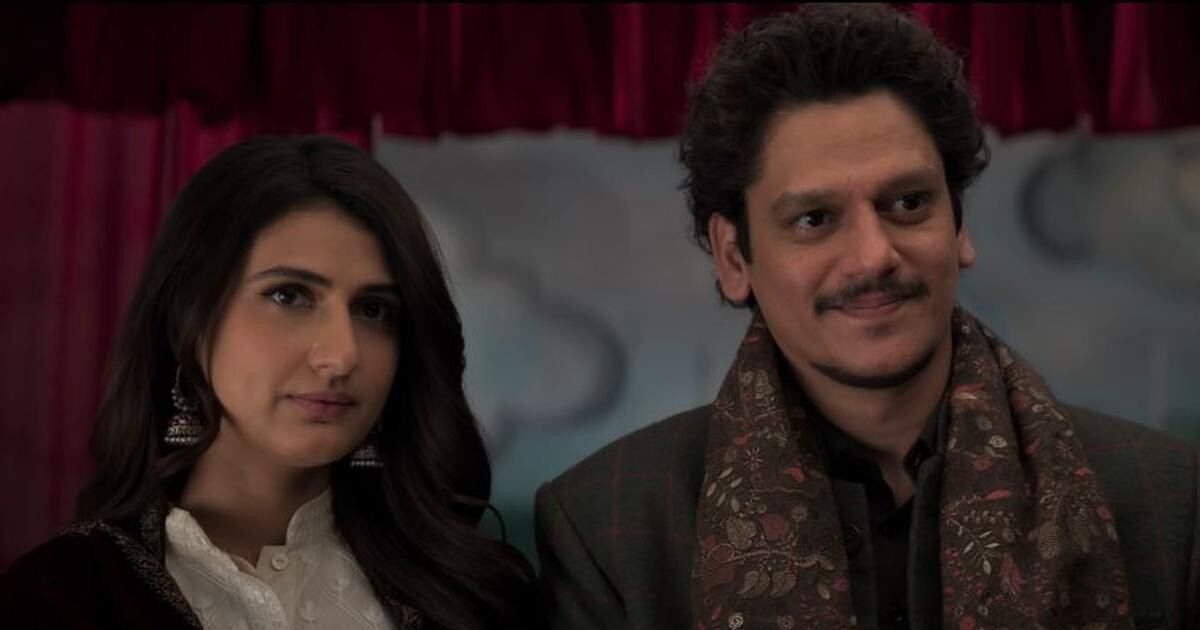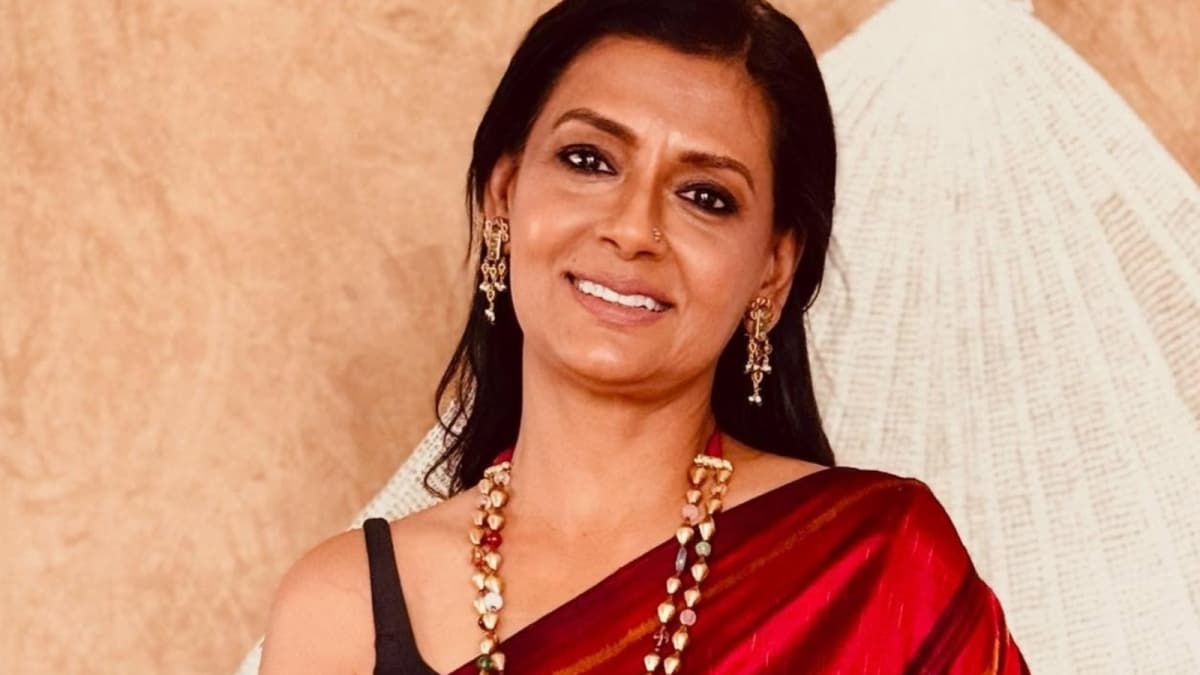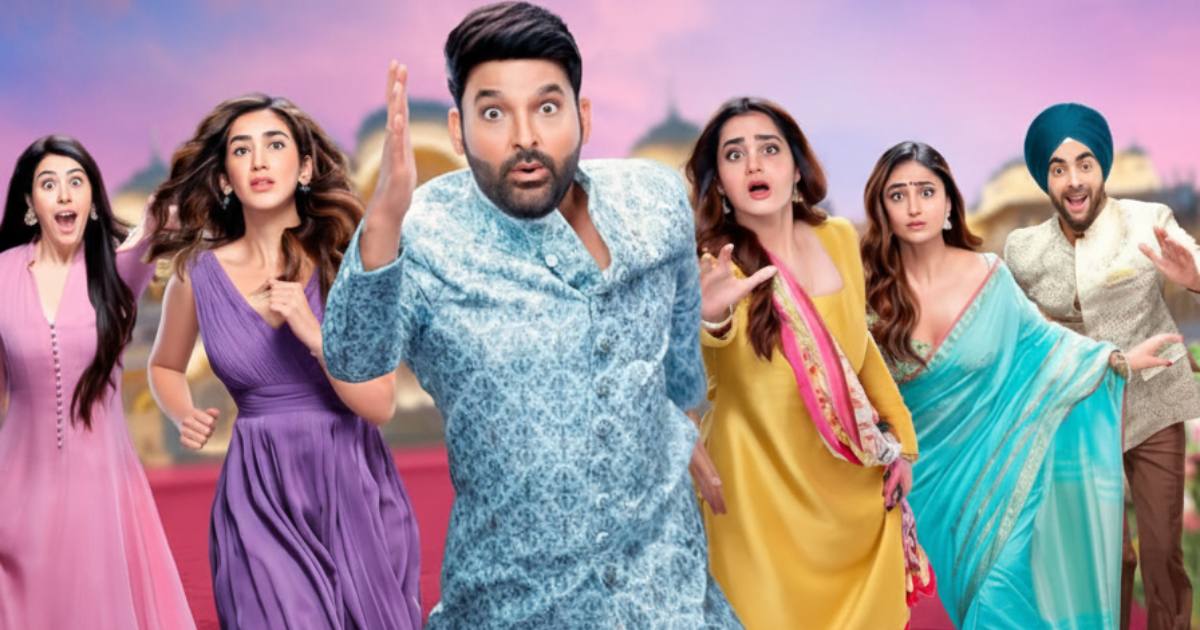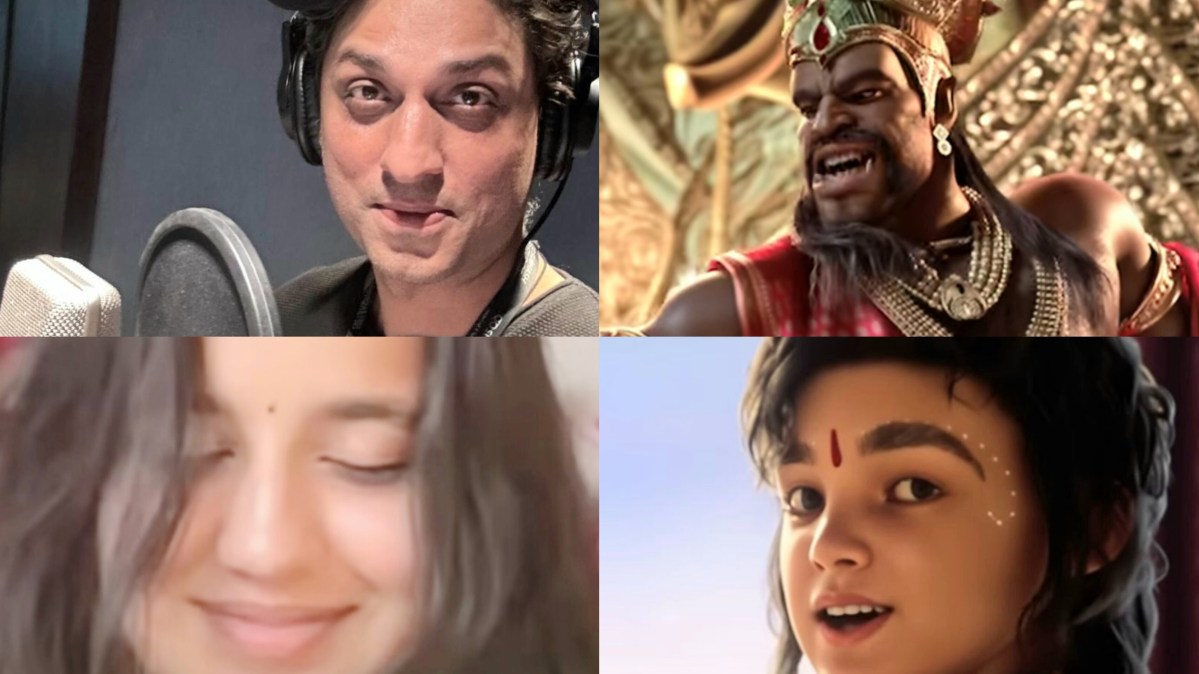
Mahavatar Narsimha is a blockbuster but do voice artists get their due in India? – Beyond Bollywood
No credit for voice cast in the press screening, and their absence in the few media events perhaps once again highlights how professional VO artists in India remain faceless and unsung.
By Mayur Lookhar
In success, it’s often the struggle story that grabs headlines. Bhojpuri icon Ravi Kishan had a small revival in Bollywood with Laapataa Ladies [2024]. Just last week, he made us smile as a maiden Sikh character in Son of Sardaar 2 [2025]. The film flopped, but Kishan was one of the few who earned praise. Off-screen, a podcast clip of his has gone viral where he stressed the power of a name. ‘Paisa nahi, naam chahiye! Ek baar naam ban gaya, toh paisa aapke paas daud ke aayega.’ As the old Hindi saying goes, ‘Joh dikhta hai, wahi bikta hai.” Going by this yardstick, the odds are stacked against professional voice artists of becoming stars in India.

Presently, everyone’s talking about the phenomenal success of Mahavatar Narsimha (2025), which has set a new box office record for Indian animation. According to trade portal Sacnilk, the film earned around Rs5.25 crore nett on day 14, taking its total domestic collection to Rs118 crore nett. Made on an estimated budget of Rs20 crore, plus about Rs50 lakh for P&A, the Hombale Films presented film opened quietly on just 150 screens in India. With YRF’s Saiyaara dominating theatres, the odds seemed stacked against an animated film making any impact. But faith has a magnetic pull, provided filmmakers do justice to a divine subject.

Back in 1975, the little-known devotional film Jai Santoshi Maa became a nationwide sensation. The success of Mahavatar Narsimha stirs the same kind of nostalgia. Riding on the back of a strong word of mouth, Mahavatar Narsimha screen count has now been increased to 2000 and it’s expected to get few more screen as this weekend, there wouldn’t be much competition.
Anyways, this article isn’t about Mahavatar Narsimha’s box-office, but we ponder about the recognition for professional voice artists in India. We were fortunate to see the film in a press screening, but there was a strange observation that we made. To the best of our knowledge, in the end credits, we didn’t really find the voice cast. Was the scroll to fast that we missed it? Or the voice artists didn’t get a mention. After the screening, we bumped into few people closely associated with the film, who informed us that perhaps it’s a marketing call by Hombale Films, who we must remember, are not producers, but presenters. We were told that the voice cast will get their due credit soon.
For the record, Mahavatar Narsimha was made by Kleem Productions in a Delhi studio some two years back. Hombale Films came onboard later as presenter. As often with animated films, the voice over is recorded first and then the visuals are created to sync with the audio. The voicing for this film is said to have been done in 2023, and stretched to early part of 2024 too.
Cut to 8 August, 2025, Mahavatar Narsimha success press event was held at ISKCON Temple in Mumbai. The invite listed director Ashwin Kumar, a representative from Hombale Films, one from primary producer Kleem Productions, and Hindi market distributor Anil Thadani, but made no mention of the voice cast. Prior commitments kept us from attending, but we hear that none of the voice artists were present. No credits for them at the press screening, no presence at the success event it’s hard not to wonder if the voice artists are being sidelined.
We reached out to a VO artist from the film, who claimed ignorance about the success press meet. Then came the shocker, “I had no idea of press screening or Friday’s success event. I’d heard about a special screening for the cast and crew, which I think was to happen last Thursday, but then nothing happened.”
Requesting anonymity, a prominent VO artist revealed, “Yes, I, too, had a heard about a special screening but last week, there were two new releases – Dhadak 2, Son of Sardaar 2, plus Saiyaara continued to get sizable screens in its third week too. Maybe, they (producer) weren’t able to find a screen.”
It’s a bit surprising, really. At regular screenings, producers, their PR team sometimes hand out vouchers/codes to the press. Surely the voice cast could have been included here too. Besides, Mumbai has no shortage of preview theatres. From what we hear, most VO artists ended up paying for their own tickets to watch Mahavatar Narsimha. One of them told us, “You’re sitting right there among the audience. They’re enjoying the movie, but they have no idea the person next to them is the voice behind that character.”
Can a Bollywood actor, particularly a super star, go unnoticed while watching a film with the audience? Well, sadly VO artists in India often remain faceless.
While the voice cast had no inkling of the press screening or Friday’s success press meet, the artists have been credited. One of them shared a picture of the credits which was shared by his/her friend.

The other artist though pointed out how perhaps the credit roll was too quick for the artist names to stick.
As opposed to Western cinema, in particularly, Hollywood, end credits roll run deep, each and every person associated with the film is credited. Here we have Mahavatar Narsimha, where the voice artists are perhaps experiencing the biggest career high, but they aren’t part of any screening nor the success press event. Though not officially confirmed, but we’ve learnt though that the leading voice cast were asked to shoot some soundbites, perhaps as part of a post release EPK.
We reached out to Aditya Raj Sharma, the voice behind antagonist Hiranyakashipu, but the ever-modest Sharma sidestepped any talk of whether voice artists were sidelined. “It’s all been positive,” he said. “I’m happy the film is doing so well. We honestly didn’t expect this kind of response. The whole team has done good. The voice cast, the VFX team, everyone did a fine job. The result is there to see. Not just India, but I believe it’s making waves globally too.”

Sharma was full of praise for writer-director Ashwin Kumar and his vision. He felt that a director also serving as a writer only helps in better storytelling. “To me, the hero of a film is not the hero. The true hero of a film is the writer. Having a writer direct means there won’t be different perception,” said Sharma.
Indian writers have their own history of struggle, but today, many are getting their due. But why do Indian VO artists continue to remain unsung? Importantly, what can s/he do to change the industry attitude towards voice artists?
A noted media personality, who is also a voice artist, presented a realistic picture.
“Look, the rule is simple. If you are a known person, they will promote you. Many a times, voicing for these projects is done few years in advance, and the artists move on to the next, not knowing what fate awaits the preceding project. Unsung heroes remain unsung, but I don’t think VO artists really bother about it. I won’t call it a thankless job, because at the end of the day, most get paid” said the noted VO artist.
The other voice artists we spoke to weren’t particularly sensitive about credits either. Aditya Raj Sharma pointed out that the rise of OTT platforms has helped voice actors gain some recognition. “Before Covid, how often did you see VO artists getting credited for even the biggest cartoons? Things have changed since the pandemic, and OTT platforms have driven that shift. It started with Netflix. Americans believe in giving credit where it’s due. Then Amazon followed, and soon our own desi networks began doing the same.” Sharma also pointed out today, even if someone doesn’t get credit, then there are some youtubers, and social media helps to amplify a popular content which invariably ends up revealing an unnamed voice.
It’s worth noting that a lot of international content on OTT, even South Indian films, is dubbed into local languages for desi audiences. This has opened doors for many unsung voice and dubbing artists in India. AI-driven original content could create even more opportunities, and while AI can generate voices, it can never truly match the tone of a human performance. The opportunities are there for the talent – but what about the moolah? Has the basic pay scale for voice artists really gone up?
Over here, we didn’t get any definitive answers. The common line here was that it all depends upon the project, the medium, experience, individual talent. But India still lags behind when compared with world standards.
“I remember a producer once telling me, that in America, if your one project clicks, then it’s like a full-time job with all benefits. Their pay scale is naturally much higher than ours,” said the voice artist.
One artist revealed how a newcomer may get a plum opportunity, but never huge money. There is basic pay chart recommended by relevant voice artists association, but that is seldom followed to the T. S/he also pointed how the rates differ medium to medium. The rate for Netflix will differ from Amazon, and Sony Liv. and similarly, JioHotstar has a different pay scale. Plus, fees are also paid depending upon the categories within different series on a particular OTT.
Getting a number from our voice artists proved difficult. Nevertheless, our noted media personality stated, “It depends person to person, project to project, and more importantly, the medium matters. Let’s say from a base pay of Rs10,000, it can stretch to Rs1.5 lakh. And if you’re a big brand then sky is the limit.” This artist pointed how voicing for advertisements can be lucrative for established voices as you get paid for per second.
We also learnt about crowd voicing, wherein a VO artist would voice for the crowd in a scene. Often one artist may be required to voice for 3-4 different characters in a crowd setting and s/he could get a base pay of Rs2000 per character.
Perhaps one can assume that largely the pay scale for voice artists in India may have improved slightly but it perhaps still pales in comparison with global standards. Voice artists in American film and TV industry are said to receive basic fee, or even paid on hourly basis.

In America, the SAG-AFTRA is the union that protects the interests of voice artists. Screen Actors Guild and the American Federation of Radio and Television Artists are unions that operated individually since the 1930s, but they merged in 2012. As per an article on Filmdaft.com, Voice actor salary for Union actors was listed as follows –
- For television animation, any SAG-AFTRA actor with a segment over 10 minutes is paid a minimum of $1,082.
- For vocal Netflix dubbing (for example, when a Japanese anime needs an English voiceover), the requirement is at least $87/hour.
- For TV commercial voiceovers, the rate is $1,030 per announcement and $257.50 per tag, which would be in eight hours.
The concept of hourly or daily wage for voice artists is said to be non-existent in Indian film and TV industry.
As one VO artist puts it bluntly, “Voicing comes right at the end. Once the (feature film) shoot is done, actors are paid, VFX is sorted, then comes voicing. By the time they reach us, most producers say, ‘Budget nahi hai.’”
This person, though, acknowledged that fees have improved slightly, but they could be better, and they still pale in comparison with the West. “If you look at the West, I believe voice artists also get a share of royalties, but here, when you sign a contract, it’s clearly stated that you have no assignment of rights. The production company can play your work any number of times on different platforms, but all you get is your fee. While singers in India have won the royalty battle, it’s still a long shot for voice artists”.
One has to make peace with that reality but the purse is loosened when Bollywood stars are associated with dubbed versions of marquee Hollywood films. The perception here is that they are stars, and with them, they will automatically attract Indian audiences.
In the recent years, we’ve seen the likes of Shah Rukh Khan, his sons lend their voices for dubbed Hindi versions of The Lion King (2019) and Mufasa: The Lion King (2024). Ranveer Singh had voiced for Deadpool 2 (2018). Priyanka Chopra had voiced for dubbed Hindi versions of Hollywood films like Planes (2013), The Jungle Book (2016) and Frozen 2 (2019). How did these Hindi versions of Hollywood film fare in India?
According to BoxOfficeIndia.com, The Lion King (2019) earned around Rs150-158 crore nett in India. We couldn’t find a language wise breakdown of the box-office collection of the 2019 film, but the opening day (all-languages) collection was close to Rs11 cr nett. The opening weekend collection was Rs54 cr nett.

We do have the language-wise box office numbers for Mufasa: The Lion King (2024) in India. The Disney release opened on roughly 1,800–2,000 screens nationwide. As per Sacnilk, day one saw the Hindi version earn about Rs2.25 crore nett, while the original English version collected around Rs3.10 crore nett.
By the ninth day, the film’s total had reached Rs80 crore nett, with Hindi contributing Rs27.65 crore and English Rs29.4 crore nett. While there’s no language split available after day 12, a leading English daily reported that by day 23, the Shah Rukh Khan-dubbed Hindi version had touched Rs47.01 crore nett, with the English version close behind at Rs45.25 crore nett. Meanwhile, Sacnilk estimates the film’s total India collection at Rs131–133 crore nett.

Getting a superstar to dub for a major Hollywood animated film surely doesn’t come cheap. In the first film, Shah Rukh Khan’s son Aryan lent his voice to Simba, while his youngest, AbRam, voiced the cub version of Mufasa. Artist fees are rarely made public, but industry chatter puts SRK’s pay anywhere between Rs5–10 crore, while one portal dramatically claimed Rs200 crore – a figure that clearly needs to be taken with a pinch of salt. If we go by the more modest estimate, it does raise the question – does a Rs47 crore nett collection for the Hindi version justify what Shah Rukh Khan may have earned for lending his voice?

What about Ranveer Singh as the voice of Deadpool in Deadpool 2 (2018)? The all-language India collection stood at Rs58 crore nett. Singh didn’t return for the next Deadpool film – Deadpool & Wolverine (2024). According to Sacnilk, by day 9, the Hindi version of Deadpool & Wolverine had bagged Rs38.65 cr, while the original English version stood at Rs53.5 cr nett. By then, the film had made over Rs101 cr nett (all languages) in India. Interestingly, noted voice artist Sanket Mhatre, who had voiced for Deadpool (2016), wasn’t picked for Deadpool 2. He, however, was brought back for Deadpool & Wolverine, and the rest is history.
Priyanka Chopra’s dubbed Hindi versions of Planes and Frozen 2 hardly made an impression at Indian box-office. The Jungle Book (2016) was successful in India but Chopra had only had a minor voice role as Kaa.
Well, animation has had a fairly long history in Indian entertainment space.

The Banyan Deer (1957), an Indian–Japanese co-production by Films Division of India and Toei Animation, was India’s first animated film, adapting a Buddhist Jataka tale in colour animation.
Pandavas: The Five Warriors (2000), directed by Usha Ganesh Raja, was India’s first computer-animated theatrical feature.
Roadside Romeo (2008), co-produced by Yash Raj Films and Walt Disney Pictures, was India’s first CGI-animated theatrical feature from a major Bollywood studio.
On televison, Nana Patekar had charmed us all as the voice of the iconic Sher Khan in the dubbed Hindi version of The Jungle Book cartoon series.
Coming back to the trend of big stars lending their voices to major films or cartoon series – Mahavatar Narsimha, a fully homegrown 3D production, has pulled in a record Rs118 crore nett so far, without a single star name in its voice cast. That says a lot about the strength of its performances, storytelling, animation, and overall quality.
What did Ravi Kishan say? “Naam hai toh paisa apne aap aayega.” Expecting an overnight shift in how Indian voice artists are paid after just two weeks of Mahavatar Narsimha may be optimistic, but as cinema lovers, we can still hope that professional voice artists begin to get the recognition they truly deserve.
The least we can do is by naming the unsung voice artists of Mahavatar Narsimha (2025).

Watch the video story below.
Publisher: Source link
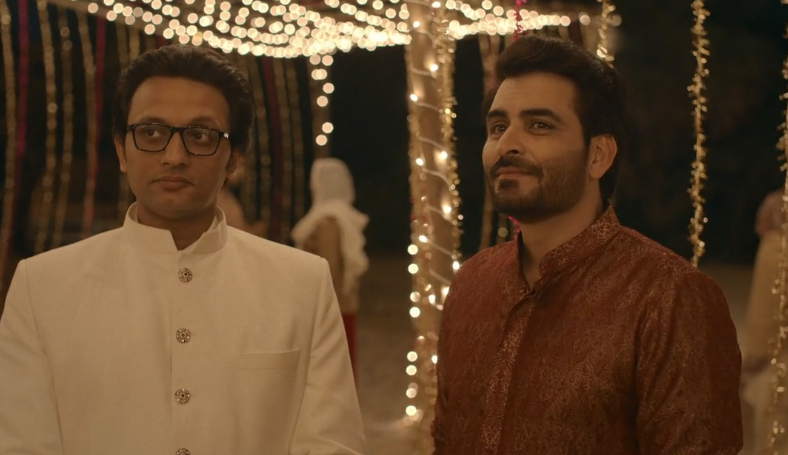
Series Review Real Kashmir Football Club

Dhurandhar Movie Review – Bollymoviereviewz
